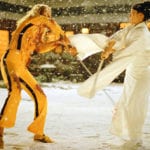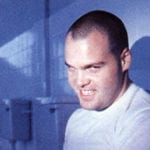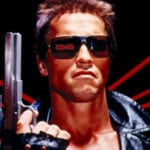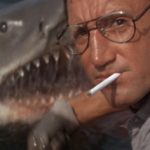 Weird Stuff
Weird Stuff  Weird Stuff
Weird Stuff  Mysteries
Mysteries 10 Tragic Disappearances and Deaths in Joshua Tree National Park
 History
History 10 Ways Childhood Really Sucked in the Old West
 Music
Music 10 Name Origins of Famous Bands from the 1990s
 Religion
Religion 10 Biggest Turnarounds by the Catholic Church
 Weird Stuff
Weird Stuff 10 Unbelievable Times Laws Had Unintended Consequences
 Humans
Humans Ten Historic Women Who Deserve Way More Credit Than They Got
 Movies and TV
Movies and TV 10 Films That Spawned Major Lawsuits
 History
History Ten Times Towns Were Wiped Off the Face of the Earth
 Creepy
Creepy 10 of the Most Disturbingly Haunted Public Houses in the UK
 Weird Stuff
Weird Stuff 10 Niche Subcultures That Are More Popular Than You Might Think
 Mysteries
Mysteries 10 Tragic Disappearances and Deaths in Joshua Tree National Park
 History
History 10 Ways Childhood Really Sucked in the Old West
Who's Behind Listverse?

Jamie Frater
Head Editor
Jamie founded Listverse due to an insatiable desire to share fascinating, obscure, and bizarre facts. He has been a guest speaker on numerous national radio and television stations and is a five time published author.
More About Us Music
Music 10 Name Origins of Famous Bands from the 1990s
 Religion
Religion 10 Biggest Turnarounds by the Catholic Church
 Weird Stuff
Weird Stuff 10 Unbelievable Times Laws Had Unintended Consequences
 Humans
Humans Ten Historic Women Who Deserve Way More Credit Than They Got
 Movies and TV
Movies and TV 10 Films That Spawned Major Lawsuits
 History
History Ten Times Towns Were Wiped Off the Face of the Earth
 Creepy
Creepy 10 of the Most Disturbingly Haunted Public Houses in the UK
Top 10 Behind The Scenes Tales About Ridley Scott Movies
After graduating from the Royal College of Art, a wide-eyed Ridley Scott spent nine months working in New York. During this time, he managed to save up enough money to visit Hollywood. The 22-year-old made the trip on a Greyhound bus and slept in a boarding house near Hollywood Boulevard. He would return, some 57 years later, to leave his own prints outside the forecourt of the illustrious Chinese Theatre. “I remember standing outside and staring at the footprints. Never, ever, would I have thought that this would happen.”
Initially, Scott had no intention of going into the movie business. He returned to England and began working as a set designer for the BBC. Realizing there was more money in advertising, Scott formed his own ad agency with his brother, Tony. During this time, Scott directed some of the most iconic commercials of all time, including Apple’s Orwellian-themed 1984 Super Bowl ad. His first experience directing came in 1965, when he conscripted his teen brother to shoot a short film along the beaches of northern England. The project, called Boy and Bicycle, had a budget of £65 and took six weeks to film.
After spending two decades in advertising, Scott decided it was time to crack Hollywood. His first feature film, The Duellists, won the Best Debut Film at the Cannes Film Festival in 1977. From there, Ridley’s career took off like a rocket. Taking us from the neon-lit streets of sci-fi dystopias to the blood-soaked grounds of Roman amphitheaters, the legendary director has left an indelible mark on the face of cinema. To date, his films have earned a staggering $4 billion at the global box office. With that in mind, we take a look at just 10 behind-the-scenes tales about Ridley Scott films.
10 Hilarious Realities Behind Your Favorite Movie Scenes
10 The Duellists’ Budget & That Horse Scene
Scott’s first feature film, The Duellists, tells the tale of two French hussars during the Napoleonic Wars. Lieutenant Gabriel Feraud ends up in hot water with his superiors after constantly engaging in duels with the other troops. Lieutenant Armand d’Hubert is dispatched to place Feraud under house arrest. But Feraud, taking the message as a grave insult, challenges d’Hubert to a sword fight. In what would become a decades-long rivalry, the two soldiers, who are based on real hussars, face off in a series of ever-intensifying duels.
Prior to starting work on the film, Scott was busy making commercials with his brother Tony. The director estimates that he made over 2,500 commercials during his 20-year stint in advertising. Instead of waiting for offers from Hollywood, Scott set to work making his own film. He used his own money to commission the screenplay, adapting Joseph Conrad’s short story The Duel. Money was so tight that Scott had to forgo a salary, acting legend Albert Finney was paid in bottles of champagne, and the entire film was shot on location. A horse-drawn carriage was painted to look like two different carriages (red for the rear, black for the front). And the sparks seen in the swordfights were generated by hooking up the swords to a bunch of batteries. This meant Harvey Keitel, who played the hot-tempered Feraud, would often get shocked while choreographing fights. Scott’s sons played small roles in the film to cut costs even further.
Scott’s time on The Duellists taught the cast and crew about the importance of improvising and adapting. In one scene, d’Hubert (Keith Carradine) proposes to his partner Adele (Cristina Raines) while strolling through the countryside. But one of the horses, Scott recalled, interrupted the tender moment: “[Cristina] started giggling. And that’s not designed, because he’s meant to be proposing… So that worked, because he thinks she’s uncomfortable, but she’s giggling because she can see the horse has got a giant erection.” Carradine managed to salvage the scene, keeping the horse under control and working through the laughter. When Carradine’s exuberant horse knocks him to the ground, he immediately stumbles onto one knee and continues with the proposal.
9 American Gangster Paid Actors to do Nothing
It’s fair to say that American Gangster’s development wasn’t exactly smooth sailing. Early production was beset with delays, script rewrites, and spiraling costs. The biopic’s original director, Antoine Fuqua, was constantly butting heads with the studio’s executives. In October 2004, just one month before filming was set to commence, Universal Pictures fired Fuqua and canned the entire project. Two major winners emerged from the cancelation: Denzel Washington and Benicio del Toro. Both actors, it turned out, had signed a “pay-or-play” contract. This meant that Washington and del Toro were entitled to receive their full salary, even though they hadn’t filmed a single scene. While del Toro received $5 million, Washington took home a whopping $20 million.
With Fuqua gone, the studio turned to Ridley Scott. In 2006, Scott partnered with Russell Crowe and screenwriter Steven Zaillian to refine the script. Denzel Washington was later brought back to play Frank “Superfly” Lucas – a Harlem gangster (and serial fantasist) who famously claimed that he had smuggled heroin into the United States using the coffins of dead American soldiers. This account was later disputed. Although Washington received no additional upfront fee, he was instead given a percentage of the movie’s profits. Russell Crowe replaced Benicio del Toro as Detective Richard Roberts, meaning the studio paid an actor $5 million for literally doing no work.
8 Alien Happened Because of Star Wars
In the summer of 1977, Ridley Scott wrapped up work on The Duellists and headed off for Los Angeles. Scott’s friend, producer David Puttnam, invited him to a screening of Star Wars: A New Hope. This was the moment that completely changed his film career. “I canceled the film I was going to do, after I saw Star Wars,” he recalled. “When that Death Star came in at the beginning, I thought, ‘I can’t possibly do [my next film] Tristan and Isolde, I have to find something else.’ By the time the movie was finished, it was so stunning that it made me miserable. That’s the highest compliment I can give it; I was miserable for week. I hadn’t met George at that point, but I thought, F–k George.”
And so, after receiving a copy of a screenplay called Alien, Scott leapt at the opportunity to make his own sci-fi flick. The script’s writer, Dan O’Bannon, was inspired by the bizarre musings of the Swiss artist H.R. Giger. The film crew brought Giger onto the project, consulting him on the designs for the xenomorph and its tentacled spawn. He even came up with ideas for how the infested spaceship on LV-426 should look. When Giger sent photographic transparencies of his work to his counterparts in L.A., the images were so disturbing that they raised alarm bells at customs. “They came through customs, who didn’t understand what they were and were alarmed, and we had to personally go down to LAX and pick these things up,” O’Bannon explained.
7 Gladiator Got Scott into the Deforestation Business
Gladiator’s opening kicks off in style, with General Maximus Decimus Meridius (Russell Crowe) taking on the Germanic tribes along the Roman Empire’s northern border. The Romans are seen using their technological superiority to outmaneuver their foes, showering them in flaming arrows and pots of burning oil. The impressive spectacle was accomplished using an enormous amount of talent, including teams of artists, costume designers, makeup artists, technicians, and choreographers.
The sequence, in which 5,000 legionnaires take on 10,000 barbarians, demanded the use of thousands of extras and costumes. The costume department set to work with armorers to create realistic outfits for the Felix troops, archers, and cavalry. Those starring as Germanic tribesmen were taken to mud pits and slathered in dirt. The team focused on making functional war machines, including a series of enormous catapults and siege ballistae. An impressive arsenal of swords and shields were constructed by the props department, along with 16,000 arrows.
Considerable effort went into making the flame effects look as spectacular as possible. A series of pipes were laid underneath the forest floor to pump propane around the battlefield. Although the conflict was set in northeastern Europe, Scott ended up filming in Bourne Woods in Surrey, England. The reason for the location was simple: the filmmaker discovered that the England Forestry Commission was going to destroy part of the forest. “So I said ‘I’ll do it. I’ll burn it to the ground,’” Scott explained. “They said, ‘good.’”
6 Black Hawk Down Went the Extra Mile to Achieve Authenticity
Following the runaway success of Gladiator, Scott turned his sights towards a more modern narrative – the Battle of Mogadishu. In 1993, at the peak of the Somali civil war, the U.S. army entered the Somali capital and attempted to apprehend a pair of notorious war criminals. The operation went badly wrong when local militias used RPGs to take out two Black Hawk helicopters.
Given Somalia’s ongoing instability, Scott’s team performed its location scout in Morocco. The coastal town of Sale perfectly mirrored Mogadishu’s look and feel, with its ramshackle huts, narrow streets, and bustling marketplaces. The King of Morocco offered to provide humvees, tanks, and helicopters for the shoot. Fortunately for Scott, then Secretary of Defense William Cohen was a huge movie fan. He also understood, based on the success of films like Top Gun, how patriotic war films could inspire military recruitment. The studio worked with the Department of Defense and the Joint Chiefs of Staff to authorize the use of U.S. military equipment for the film, including a complement of Black Hawk and Little Bird helicopters. Eight helicopters and 40 U.S. Rangers were used for the 3-month shoot in Morocco, with costs coming in at around $3 million.
Meanwhile, the production designer traveled to negotiate with the locals. Given that Black Hawk Down was a pre-9/11 shoot, the team didn’t need to worry so much about anti-American sentiment or terrorist sympathizers. In exchange for repairing the local infrastructure, including schools and mosques, Scott and co. were given permission to film across the region. Much of the town’s signage was altered to match that of Somalia, graffiti was daubed across buildings, and a mishmash of telephone and utility poles were spread throughout the region.
While the crew built sets across disused soccer fields and half-finished construction sites, the cast began prepping for the shoot. The likes of Orlando Bloom, Jason Isaacs, Ewan McGregor, Tom Sizemore, Eric Bana, and Tom Hardy were all signed onto the project. After their heads were shaved, the actors were separated into three specialist commands: Delta Force, Rangers, and the helicopter pilots. The ground units learned how to infiltrate enemy-occupied buildings and prepare breaching charges, while the pilots trained in specialist flight simulators. “On the last day of boot camp, we got an anonymous note pushed under our door,” explained Jason Isaacs, who played Captain Michael Steele. “It thanked us for our hard work, and asked us to tell their story true. And it was signed from all the boys who had died.”
5 Scott was Technically Fired from Blade Runner
Production on Blade Runner seemed to lurch from one unmitigated disaster to another. Ridley Scott only took on the film as a coping mechanism for dealing with the loss of his eldest brother. With production on his next project, Dune, over a year away, Scott agreed to take on Blade Runner instead. Several issues soon emerged.
Philip K. Dick’s “Do Androids Dream of Electric Sheep?” was adapted into a screenplay for the film, the first version of which the author absolutely despised. When Ridley told scriptwriter Hampton Fancher that another writer was going to revise his work, he broke down in tears and refused to do any more work on the film. “F–k you, guys,” were Fancher’s exact words. At this point, Blade Runner was already behind schedule and the budget had ballooned from $12 million to $20 million. Sensing a catastrophe, the original backer pulled its funding. This left the producer with just two weeks to find entirely new financiers, which they did.
Flown into Los Angeles at the last minute, Scott was surrounded by a sea of unfamiliar faces. Harrison Ford, who played a gruff replicant-hunter named Rick Deckard, practically begged the director for guidance on his performance. But Scott wasn’t particularly interested in providing feedback to his actors, instead preferring to focus on set dressing and basic plot beats. Spats soon arose over the direction of Ford’s character. While the director pushed for Deckard to be an unwitting replicant, Harrison hated the idea. Scott started adding subtle clues hinting at Deckard’s non-human status. When Ford found out about his boss’s scheming, he shouted, “Goddammit, I thought we said I wasn’t a replicant!” The two ended up arguing almost every day.
The cast and crew worked long hours to meet their director’s demands. This, combined with the mostly nighttime shoots, left the team feeling utterly demoralized. With the film almost $8 million over its revised budget, some of the backers started to panic. In July 1981, Ridley Scott and producer Michael Deeley were officially fired. The decision came from two of the film’s money men, Bud Yorkin and Jerry Perenchio.
“[Michael Deeley] said, ‘What I suggest you do is get onto your union.’ And so I did,” Scott enthused. “And I’ve been very impressed with the DGA [Directors Guild of America] ever since. They corrected the process instantly.” Although Ridley and Deeley continued work on Blade Runner, Yorkin and Perenchio now had final say over the editing process. This led to the inclusion of Harrison Ford’s much-maligned voice-over, in which his character essentially explains the entire plot to the audience.
4 Hannibal’s Brain-Eating Scene was a Technical Feat
Despite achieving middling review scores, Hannibal managed to gross around $350 million at the global box office. The film concludes, rather memorably, with Hannibal Lecter (Anthony Hopkins) performing a craniotomy on a corrupt Justice Department official and feeding the victim parts of his own brain. The gruesome moment was captured using a mixture of techniques, including CGI and animatronics.
First a body cast of the character, played by Ray Liotta, was taken (not a pleasant task given the actor suffers from claustrophobia). The VFX team then created an animatronic replica of Liotta that was capable of basic movement and facial animations. A removable skull cap allowed the team to insert a cow’s brain into the puppet’s head. This gave Anthony Hopkins the opportunity to delve around inside what appeared to be Ray Liotta’s head. The surgical cuts were shot from certain angles to prevent the audience from suspecting a dummy was being used.
CGI wizardry was used for the shots where Liotta was talking to other characters. The Goodfellas star wore a green skull cap for the sequence. This provided Scott’s own visual effects company, The Mill, an opportunity to digitally replace the top of Liotta’s skull with an exposed brain. The end result was so effective that, during post-production, Scott struggled to tell the difference between the puppet and the real actor. “In that scene, there are two or three shots which actually are the figure and not [Liotta]. And I’m never going to tell you which ones they were, because it was so good that eventually, when I had to cut it in, I had to look closely and go, ‘Oh, good lord. That’s the figure they made.’”
3 NASA Used The Martian for Cross-Promotion
The Martian, based on Andy Weir’s wildly popular sci-fi novel of the same name, tells the tale of a NASA astronaut who gets stranded on the surface of Mars. The hapless engineer, Mark Watney, must survive long enough for his crewmates to come to his rescue. Watney uses his wits to survive, sending a distress signal to NASA, repairing his depressurized habitation module, and planting crops with nothing but human excrement and repurposed rocket fuel.
When NASA heard that Scott was helming the film, the agency immediately offered their technical expertise. Jim Green, NASA’s Director of the Planetary Science Division, put together a team of experts who could answer the studio’s questions. The production designer spent hours touring the Johnson Space Center, asking questions about space flight and snapping photos of NASA prototypes. Even aspects of the script were fine-tuned in collaboration with NASA employees, many of whom were taken on as technical consultants.
NASA was keen to promote the movie, viewing it as an opportunity to secure additional funding for future projects. In December 2014, a page of Scott’s script was blasted into space aboard the Orion spacecraft. The film’s Comic-Con panel was packed with NASA engineers, directors, and astronauts. In 2015, it organized a “Martian Day” at the Jet Propulsion Laboratory in California. Attended by Matt Damon, Andy Weir, and Ridley Scott, the event was designed not only to promote the film but also reiterate NASA’s ambitions of putting a man on Mars by 2030. Two days before the film’s release, NASA announced that it had discovered liquid water on the surface of Mars. The discovery prompted speculation that Mars was home to underground aquifers and perhaps even microbial life.
2 Alien: Covenant Killed Alien 5
It’s fair to say that the road to Scott’s prequel films has been rather bumpy. James Cameron, director of Aliens, abandoned plans to work on another Alien sequel after 20th Century Fox greenlit Alien vs. Predator (AVP), claiming the crossover would delegitimize the entire franchise. “I started working on a story,” Cameron explained. “I was working with another writer and Fox came back to me and said, ‘We’ve got this really good script for Alien vs. Predator.’ And I got pretty upset. I said, ‘You do that you’re going to kill the validity of the franchise in my mind.’ Because to me, that was Frankenstein Meets Werewolf.” Much to the director’s surprise, he ended up liking both AVP and Prometheus.
Cameron and Scott had been looking to explore the origins of the alien. While the collaboration came to an abrupt end, Scott eventually used some of their ideas for Prometheus. Released in 2012, Prometheus focuses on the origins of the iconic “Space Jockey” seen aboard the derelict ship in the original film – albeit set on an entirely different moon (LV-233). As an aside, the corpse of the mysterious creature was almost cut from Alien entirely. Although the Jockey and its cockpit were considered too expensive to make, Scott defied the studio’s orders and had H.R. Giger construct them anyway.
In 2015, Neill Blomkamp (District 9) was officially appointed the director for Alien V. The film would have seen Sigourney Weaver reprise her role as a much older Ellen Ripley, with other returnees including Corporal Hicks and Newt. The events of Alien 3 and 4 would have been retconned, hence the revival of Hicks and Newt. Although Sigourney expressed her excitement for the script, the project was put on hold until the release of Ridley Scott’s second prequel story, Alien: Covenant. Officially, Blomkamp’s film is now dead in the water, with the studio execs favoring Scott’s third and fourth prequels. While rumor has it that James Cameron is interested in making Blomkamp’s vision a reality, the project remains in limbo.
1 Legend Underwent 15 Rewrites
When writer William Hjortsberg started spitballing ideas for Scott’s dark fantasy Legend, he didn’t exactly have much to go on. He was given a basic outline of the plot and told to read a book about fairies. So it should come as no surprise to learn that the script needed a considerable number of rewrites. Oftentimes, new writers are brought aboard to rework entire scripts (much to the annoyance of the original author). But, against all the odds, Hjortsberg was allowed to present 15 different iterations of his screenplay.
Legend pulled in several directions. Scott and Hjortsberg wanted to tell a much darker tale, while the executives were clearly aiming for a more child-friendly, Disney-esque adventure flick. Hjortsberg’s first draft, completed in 1980, came in at around 145 pages. Scott loved it, and the two presented the screenplay to the studio soon after.
Legend tells the story of a world plunged into chaos. At the behest of a horned devil, Darkness, a bunch of goblins slay a magical unicorn and steal its horn. They then kidnap the princess, spiriting her away to their master’s lair. The kingdom becomes cursed and falls into perpetual winter. Our wily hero, Jack O’ the Green (Tom Cruise), must rescue the princess and restore order to the world. In the original script, Darkness was supposed to seduce the princess and have sex with her. This did not impress the studio bigwigs. “One thing simply has to be changed,” explained one cigarette-puffing executive, Marcia Nassiter. “You can’t have the villain f–k the princess.” And so began the process of Hjortsberg redrafting his story, over and over again. After nearly four long years of rewrites, the crew finally set to work storyboarding the epic fable. While Darkness still tries to get the princess into bed in the film, his advances are a little less successful.
Top 10 Behind The Scenes Facts About Spielberg Movies








